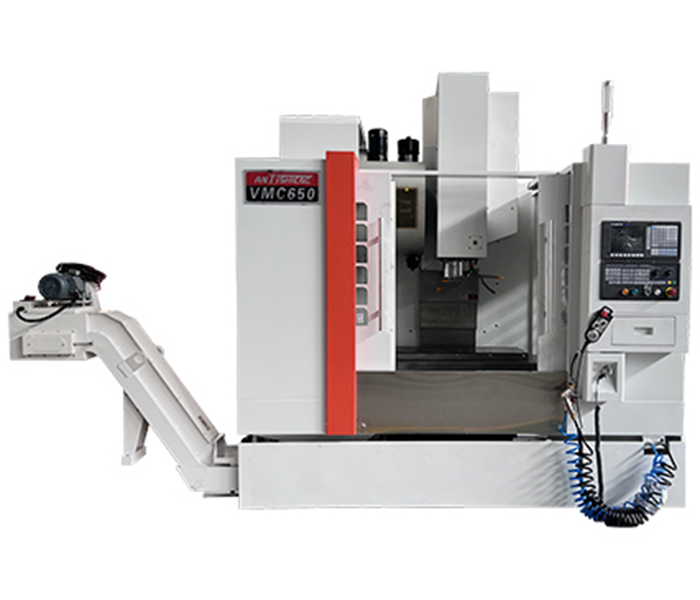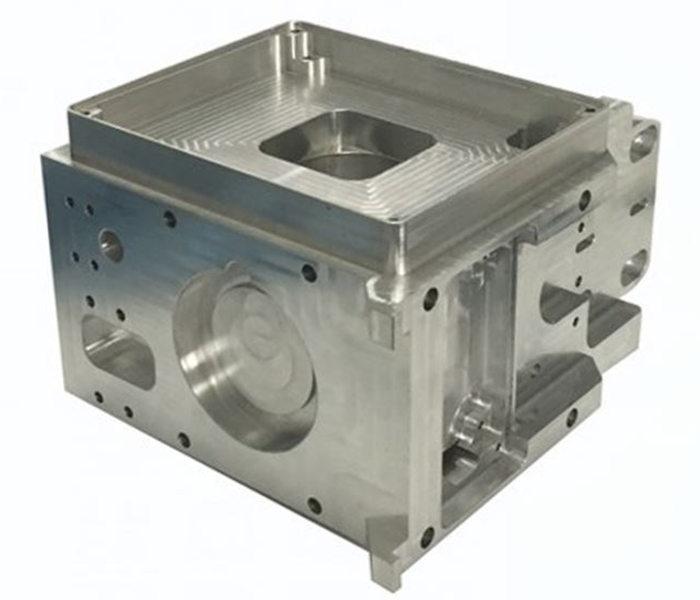
Recently, a UAE customer of Shanghai ANTISHICNC Company needed to purchase a CNC Milling Machine to process the gripper motor fixing plate. The outer dimensions of the fixing plate are: 95*40*55mm. The required processing accuracy is 0.01ru, and the surface treatment is oxidized gold.
Next, the technical engineer of Shanghai ANTISHICNC will give you a detailed introduction to the advantages of CNC machining.
① The number of tooling is greatly reduced. Complex tooling is not required for machining parts with complex shapes. If you want to change the shape and size of the part, you only need to modify the part processing program, which is suitable for the development and revision of new products.
②) The processing quality is stable, the processing accuracy is high, and the repetition accuracy is high, which meets the processing requirements of aircraft.
③ The production efficiency is high in the case of multi-variety and small batch production, which can reduce the time of production preparation, machine tool adjustment and process inspection, and the cutting time is reduced due to the use of the optimal cutting amount.
④ It can process complex surfaces that are difficult to process by conventional methods, and even some unobservable processing parts.

According to customer needs, ANTISHICNC engineers successfully matched a CNC machining center for the customer – VMC650, which can process the size of 800*450*500mm. The following are the basic parameters of VMC650:
| Specifications | Unit | VMC650 |
| X-Axis travel | mm | 800 |
| Y-Axis travel | mm | 450 |
| Z-Axis travel | mm | 900*45 |
| Distance from spindle end face to worktable | mm | 120-620 |
| Working desk size | mm | Φ48 |
| Spindle motor power | mm | (AC servo)5.5kW |
| Tool magazine capacity | mm | 24 |
ANTISHICNC engineers will introduce you to the detailed processing process:
Preliminary preparation
1.Drawing analysis: Carefully study the part drawings of the gripper motor fixing plate to clarify its size requirements, accuracy requirements, surface roughness requirements, etc.
2.Tool preparation:Prepare the corresponding tool according to the processing technology and part characteristics.
3.Fixture selection: Select a suitable fixture to clamp the blank to ensure the stability and positioning accuracy of the blank during processing. Commonly used fixtures include three-jaw chucks, four-jaw chucks, flat-nose pliers, etc.
Processing process:
1.Rough machining
Turning shape: Clamp the blank on the fixture, use an external cylindrical turning tool to turn the blank, remove most of the excess, and approach the final outer dimensions of the fixing plate, but leave a certain amount of finishing allowance, generally 0.5-1mm per side.
Drilling: According to the position and size of the hole on the fixing plate, use a drill to drill holes in the corresponding position. When drilling, pay attention to controlling the feed speed and speed to avoid drill bit breakage or hole position deviation.
2.Finishing
Fine turning of the shape: Replace the sharp external cylindrical turning tool and fine turn the shape of the fixed plate to ensure that the dimensional accuracy and surface roughness meet the requirements of the drawing.
3.Reaming or boring: For holes with precision requirements, reaming or boring may be required after drilling to improve the dimensional accuracy and surface quality of the holes.
4.Tapping:If there are threaded holes on the fixed plate, use a tap for tapping.
Inspection and quality control
1.Dimensional accuracy inspection: Use measuring tools such as calipers, micrometers, and internal diameter gauges to measure the key dimensions of the fixed plate to ensure that the dimensional deviation is within the tolerance range specified in the drawing.
2.Geometric tolerance inspection: Check whether the geometric tolerances such as flatness, verticality, and parallelism of the fixed plate meet the requirements. You can use tools such as flat plates and dial indicators for measurement.
3.Surface quality inspection: Observe whether the surface roughness of the fixed plate meets the requirements and whether there are defects such as knife marks, scratches, and burrs.
4.Assembly inspection: Carry out an assembly test on the processed fixing plate and the grabbing motor to check whether the mounting holes of the fixing plate and the motor match, whether the assembly is firm, and whether the motor runs normally.
For more technical details and CNC machine tool knowledge, please contact Shanghai Antis Machinery Equipment Co., Ltd. We provide customers with timely technical support, training and high-quality milling machines.
Keywords: Milling machine, CNC lathe, CNC milling machine processing gripper motor fixing plate


